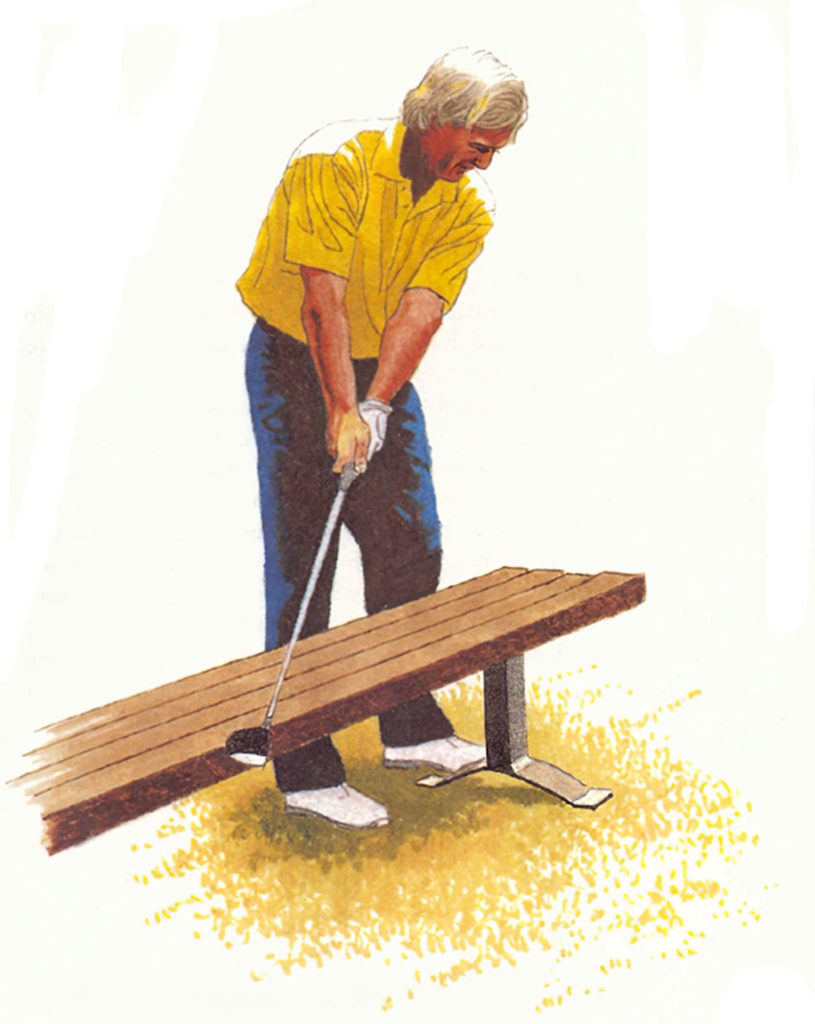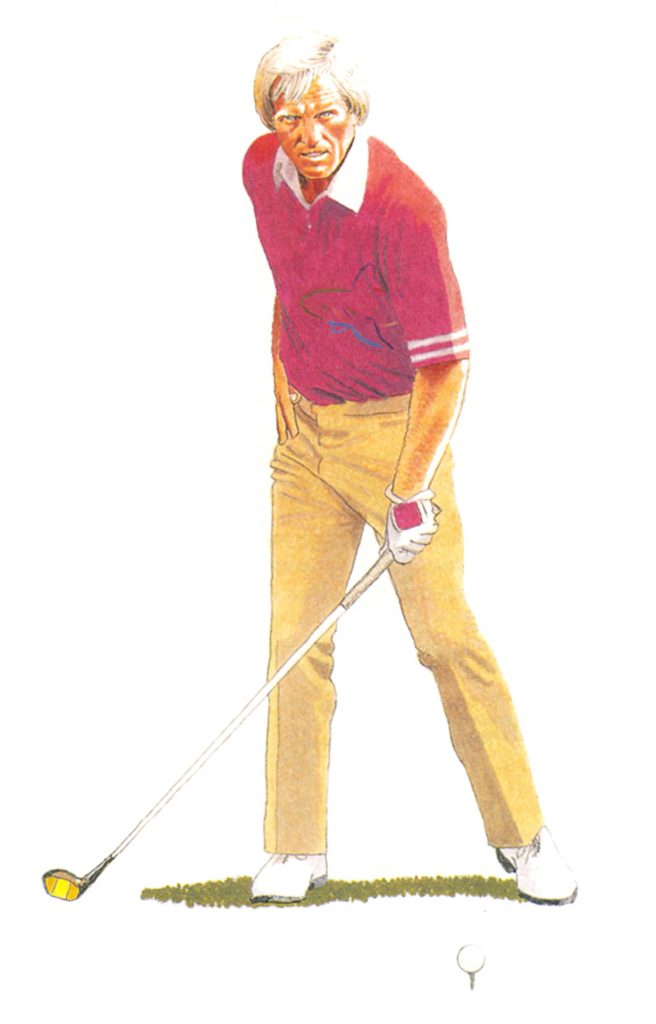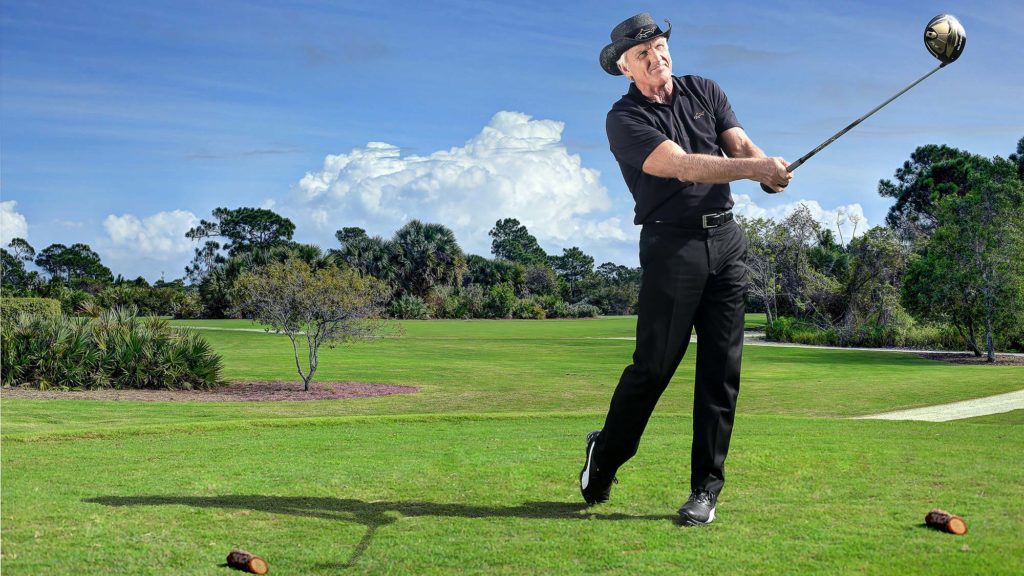Go ahead and take the club back past parallel if you want. But do it right.
I’ve always been an advocate of a big golf swing.
Go ahead and take the club back past parallel if you want. But do it right. Be aware that there are three bad ways and one good way to make a big swing.
Bad way No.1 is loosening your grip at the end of the backswing, and letting the clubhead flop towards the ground. Unless you can perform a miracle and regrip perfectly before impact, this loose grip will produce loose shots.
Faulty method No.2 – probably the most common error – is overbending the left elbow (for right-handers). This adds a hinge to the swing, a hinge that rarely works smoothly.
And the third mistake is to toe-dance at the top of your swing, raising up onto the toe of your left foot as you lurch for the sky, as seen by many of today’s athletic young players. From that position, there is no safe return.
The proper way to make a big backswing is with a big turn of the hips and shoulders. It’s OK to have a little lift in your left heel, and it’s OK to have a bit of flex in your elbow too. But don’t overdo either, and by all means keep a firm hold on the club, particularly in the last three fingers of your left hand.
But the key is to turn your hips and shoulders so that at the fullest extent of the backswing your back faces your target. If you can’t make this 90-degree-plus turn naturally, then try some flexibility exercises – but don’t ‘cheat’ your way to a big swing, as it will only bring big trouble.
Four more tips to consider for extra power:

THE EXTENSION BENCH
The extension position – a point halfway through the backswing where the club extends directly away from your target – is an extremely important movement in the swing, as it is here that the length of your swing arc (and thus your power potential) is established. Too many golfers fail to achieve a proper extension when they either cock their wrists too soon on the backswing or pull the club to the inside and around them rather than pointing it straight back.
Bruce Edwards gave me a good tip for working on the extension. It requires a prop, but one that you’ll find on many tees – a bench seat. Take your stance on one side of the seat with your club extending across to the other side. Then practise making a straight-back takeaway of the club, as far back as you comfortably can. The bench will not allow you to pull the club to the inside, so you’ll quickly get the feel of how to establish a full, powerful arc.

R.P.B. FOR LONG DRIVES
I suspect that I’m one of the few players – pro or amateur – who doesn’t have a lot of swing thoughts. On most shots, the only thing I tell myself as I take the club back is ‘rhythm’. But every now and then, when I’m trying to play a special sort of shot, I will call up an image or thought for extra encouragement.
When my mission is to get maximum distance on a tee shot, in order to reach a par 5 in two, I’ll tell myself: ‘R.P.B.’ Those initials stand for ‘right pocket back’, a reminder for me to make a full hip turn in which my right front trouser pocket rotates towards my back as far as possible. When I make this maximum hip turn, my shoulders also turn fully and I finish the backswing with a full coil that unleashes powerfully on the downswing and into the ball. The principle is the same as with a sling shot – the farther you can pull it back, the faster it will snap through, and the longer the shot will fly.

HIT THE SECOND BALL
Extension back and away from the ball on the takeaway is important to set the full, powerful arc of your swing. But just as important is extension through the ball at and after impact, to keep the club on line for a squarely struck, accurate shot.
If you tend to ‘quit’ at impact, or if your wrists sometimes break down and you pull the club quickly to the inside, then pretend that you’re hitting not one ball but two. Imagine a second ball, approximately 50 centimetres forward of the actual ball and on a straight line from the actual ball to your target. Then, try to ‘hit’ that second ball as well as the real one. This exercise will ensure that you extend your arms and club properly through impact.
MY SWING DOES NOT CHANGE
Two qualities that I’ve tried to build into my game are consistency and simplicity. Nowhere is this more true than in the swing itself. Once I’m settled into my address position, I make no conscious swing adjustments. And I make the same swing for every club in the bag. Whereas many players advocate using a progressively shorter and less forceful swing as the length of the club decreases, I swing back to a parallel position whether the club in my hand is a driver, a 3-wood, a 3-iron, a 7 -iron or a wedge (except for pitches or chips).
As the club shortens, your clubhead arc automatically decreases, so there’s no need to throttle back on your tempo. Besides, by keeping your swing length consistent you have the confidence that the length of your shots can be controlled solely through your club selection.



